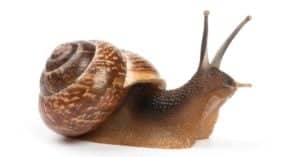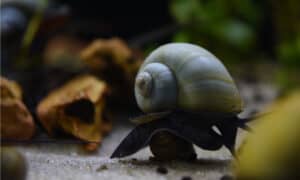When it comes to the sleep habits of these creatures, the first question is whether snails are nocturnal or diurnal. While much research leans toward snails being primarily nocturnal creatures, some studies suggest they may also exhibit some diurnal behaviors. This article looks closely at snails’ sleep behavior and discusses whether they are nocturnal or diurnal creatures. Or something else entirely.
Sleep Behavior of Snails: Nocturnal, Diurnal, of Other?
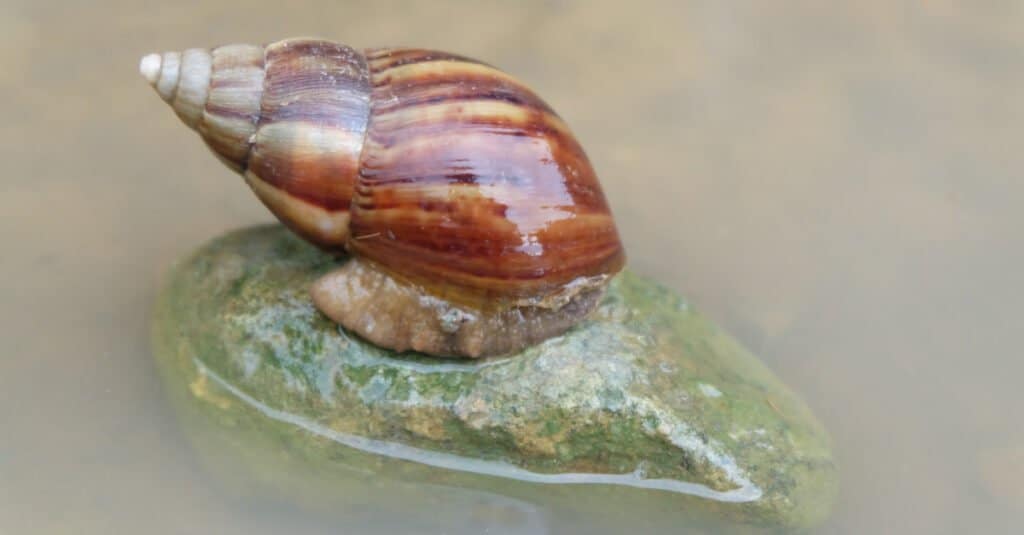
Snails can sleep during the day. However, their
sleeping pattern
is not specific to a 24-hour period (day and night hours).
©Needatang/Shutterstock.com
If most research points to snails being nocturnal, are all snail species nocturnal? The answer appears far more involved than a simple yes or no answer. Several aspects influence a snail’s sleeping behavior, such as the type of snail, time of year, and environment. But let’s look at the common denominator for the sleeping pattern of all snails.
Snails can sleep during the day. However, their sleeping pattern is not specific to a 24-hour period (day and night hours). Their sleep cycle lasts two to three days, with seven bouts lasting 25 minutes every 13 to 15 hours. There are approximately 33 to 41 hours between sleep cycles.
Species of Snails
All snails are mollusks, but not all mollusks are snails. Mollusks are a very large phylum that contains over 100,000 species of animals, and the Gastropoda class (65,000 species) is just one of 19 other classes of mollusks. And snails have an extensive range of habitats in which they can live, such as the ocean, freshwater rivers, lakes, and land.
Land snails are the largest group of snails, with over 35,000 species. Sea snails make up 30,000 of the Gastropoda class, and freshwater snails account for 5,000 species. Besides, snails can vary significantly in size depending on their species. The smallest snail ever recorded was just 0.04 inches long, while the largest snail ever recorded was nearly 8 inches long!
Let’s look at the behaviors of the three types; land, sea, and freshwater snails.
Land Snails
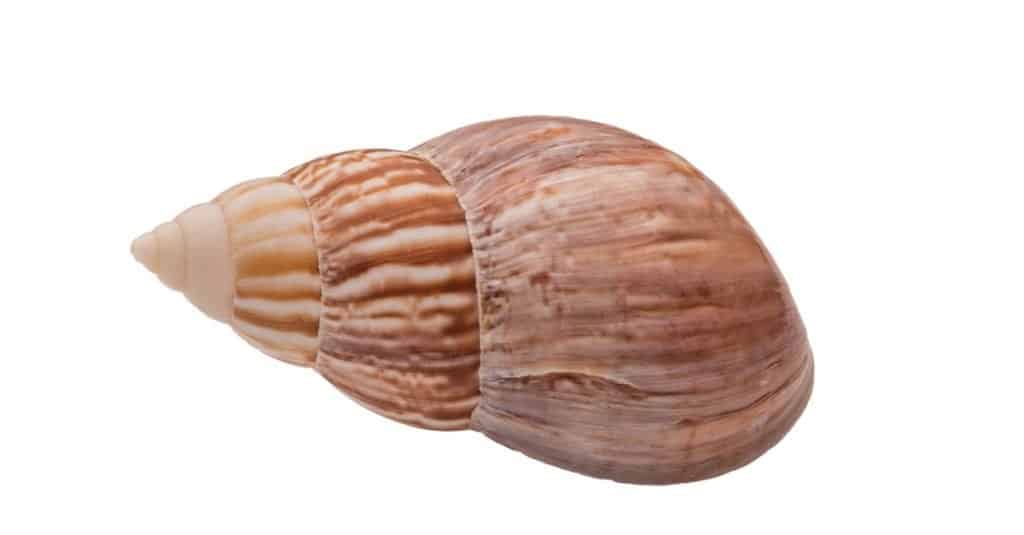
Land snails typically prefer cooler temperatures and higher humidity levels, and so are nocturnal creatures.
©Billy Watkins/Shutterstock.com
Land snails are usually more nocturnal due to their preference for cooler temperatures and higher humidity levels, typically found at night.
Rain
Land snails like to come out when it rains, regardless of the time of day. But why is that? It turns out that snails need moisture to survive. Their bodies are mostly water, and they secrete a slime trail as they move around.
This slime helps them to breathe, as well as to stay hydrated. If snails are in direct sunlight for too long, their skin will dry, and they will die. So, rain provides the perfect opportunity to venture out and explore the world around them. During the hot summer, land snails avoid the heat and dryness of the daytime by hiding in shaded areas such as under rocks and in crevices.
Estivation and Hibernation
In scorching and dry temperatures, land snails will estivate (retract into shells and sleep) for up to three years. Additionally, in frigid weather, they will hibernate for a similar period.
Activity and Feeding
Overall, research shows that the peak time for the feeding activity of land snails is at 24.00 hours, while the least busy times are between 4:00 and 20.00 hours. The land snail species are most active between 22:00 and 24:00 hours and are least active from 11:00 to 17:00 hours.
Consequently, it is evident that land snails tend to be more nocturnal in their activity and habits due to their ideal temperature and humidity preferences.
Sea Snails
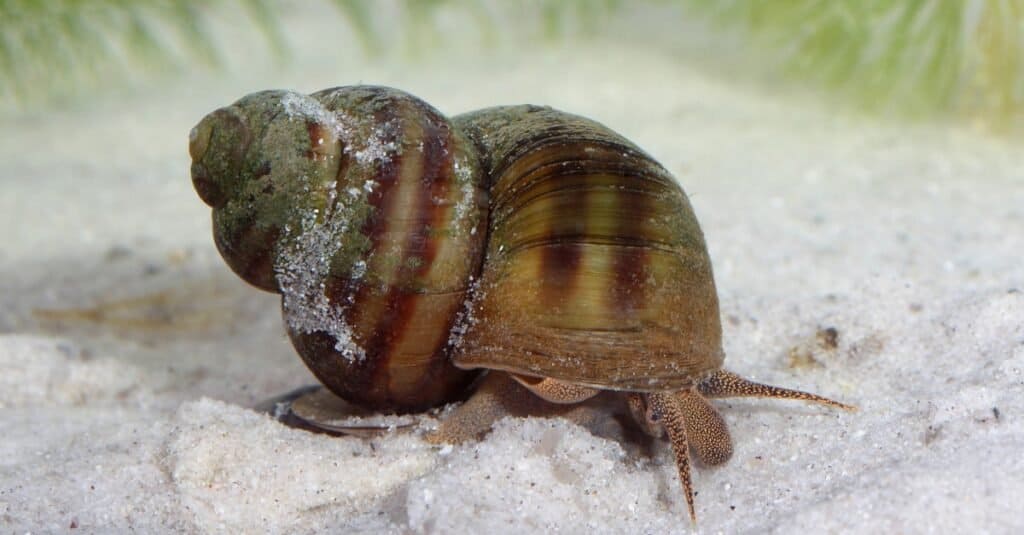
Aquatic snails have two tentacles; land snails have four and are either crepuscular (active at dawn and dusk) or nocturnal.
©Vitalii Hulai/Shutterstock.com
Sea snails are a wide and varied group of creatures exhibiting various behaviors regarding their sleep and activity cycles.
Contributing Factors
Depending on their habitat, tidal conditions, predation, and food availability, some species may be more crepuscular (active during dawn and dusk) or strictly nocturnal. So, there is no definitive answer to whether or not all sea snails are 100% nocturnal creatures.
However, many species are more active at night because there are fewer predators around and more opportunities to forage for food. The cooler temperatures at night may also be more suitable for some sea snail species. Ultimately, whether or not a particular sea snail is nocturnal depends on the individual species and its specific needs and habits.
Hibernation
As for hibernation, some species of sea snail do hibernate if the water is icy in winter. However, they also tend to hibernate if feeding opportunities are scarce. However, it is rare for sea snails to hibernate for long periods.
Freshwater Snails
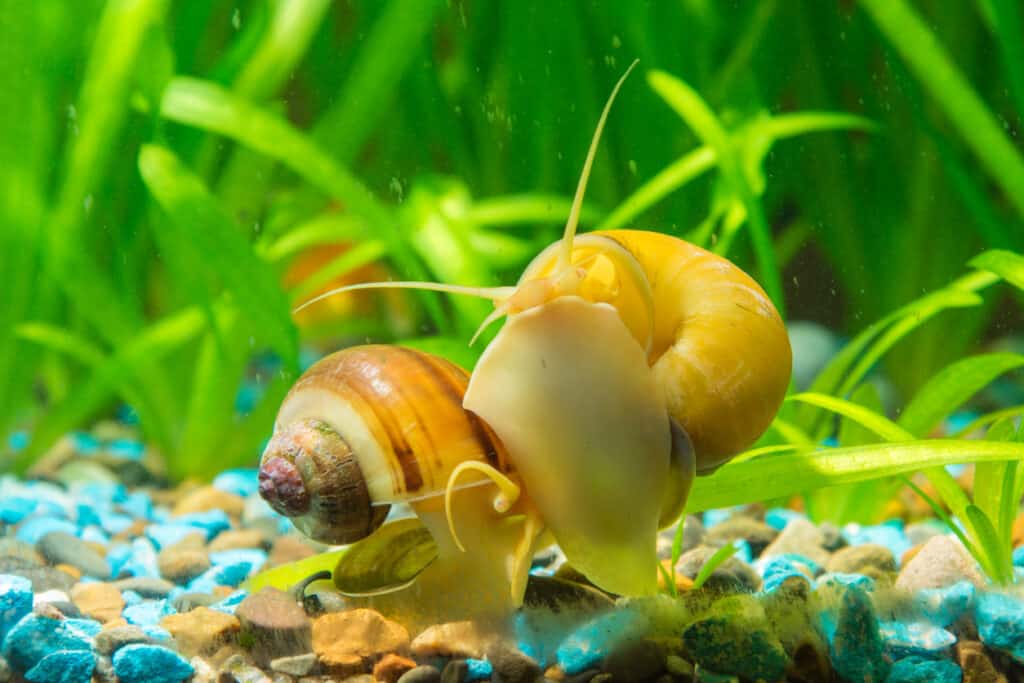
Freshwater snails are primarily nocturnal, but further research is necessary to establish this theory beyond doubt.
©iStock.com/Madhourse
Scientists have long been interested in light’s influence on animals’ behavior. In a recent study, researchers investigated the effects of light on the freshwater snail Biomphalaria glabrata.
Study and Results
Scientists used time-lapse cinematography to track the activity of the snails in response to different light regimes. The results showed that the snails were significantly less active under continuous light than under constant or intermittent darkness. Furthermore, the activity rate was substantially higher in the dark than in the light under a normal light cycle.
Further studies are necessary to reveal more about this phenomenon. However, this study provides evidence that light plays an essential role in regulating the behavior of freshwater snails. Therefore, it is safe to conclude that freshwater snails are primarily nocturnal.
Freshwater Snails as Pets
People often keep freshwater snails as pets in home aquariums. They make for interesting and low-maintenance pets that are peaceful and require little care. It is not unusual for people to worry when they see their snail remaining dormant and stationary for long periods and think that the snail has died.
However, it is essential to know that freshwater snails are most active at night and may remain very still during the day. The best way to tell whether a snail is alive or dead is to gently touch the operculum (the rigid, plate-like structure that covers and protects the snail’s head). If the snail retracts into its shell, then it is alive. The snail is most likely dead if there is no movement in response to touch.
Education Before Commitment
Although snails are fascinating creatures and can make for enjoyable pets, understanding their sleep patterns and behaviors is vital. Education before commitment will ensure you provide these beautiful creatures with a good quality of life if you keep them as pets.
Nocturnal vs. Diurnal: What’s The Difference?
Navigate to Nocturnal vs. Diurnal: What’s The Difference? for further information about the nocturnal and diurnal phenomenon in various living creatures.
Up Next – All About Snails
- Cute Snails
- The 9 Largest Snails In The World
- Snail Eggs: What They Look Like & 7 Fun Facts
- Snail Lifespan: How Long Do Snails Live?
The photo featured at the top of this post is © iStock.com/VitalisG
Sources
- International Journal of Limnology, Available here: https://www.limnology-journal.org/articles/limn/abs/2010/01/limn10004/limn10004.html
- Springer Nature Switzerland AG, Available here: https://link.springer.com/article/10.1007/BF00014059
- German Malacological Society, Available here: https://www.molluscs.at/gastropoda/index.html?/gastropoda/dormancy.html
- Oxford University Press, Available here: https://academic.oup.com/mollus/article-abstract/55/2/273/1001350
- Fundación Dialnet, Available here: https://dialnet.unirioja.es/servlet/articulo?codigo=5136602
- Britannica, Available here: https://www.britannica.com/animal/gastropod#ref413025
- The Company of Biologists, Available here: https://journals.biologists.com/jeb/article/214/5/747/33581/Behavioural-evidence-for-a-sleep-like-quiescent
- ScienceDirect, Available here: https://www.sciencedirect.com/science/article/abs/pii/0305049194901899
- Google Books, Available here: https://books.google.co.za/books?hl=en&lr=&id=iRklBQAAQBAJ&oi=fnd&pg=PA431&dq=land+snails&ots=FcXxit4iMh&sig=PONJTbrly3MLmFmRg1AqbXoHMBE&redir_esc=y#v=onepage&q=land%20snails&f=false
- Scientific Electronic Library Online, Available here: https://www.scielo.br/j/bjb/a/pCRRnycRpD9dXmYN9NxhsGB/abstract/?lang=en
- A-Z-Animals, Available here: https://a-z-animals.com/blog/how-long-do-snails-sleep/
Thank you for reading! Have some feedback for us? Contact the AZ Animals editorial team.



